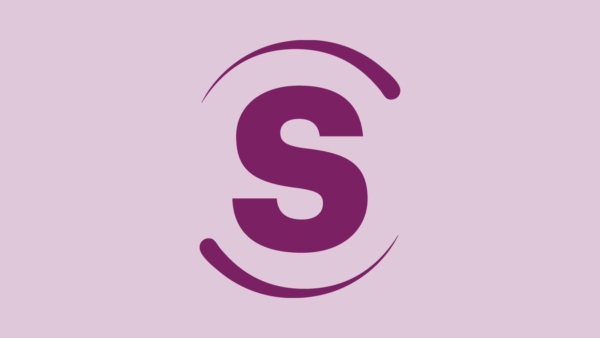If you’re a strengths practitioner, this is essential information!
In today’s episode, I want to focus in on one particularly important study in the field of strengths research. It was carried out in 2019 by an international research group from Canada, France, the Netherlands and South Africa. It’s called ‘Strengths use in the workplace’. The reason for spending a whole episode on just one study is for two reasons:
- The researchers have pulled together meaningful findings from 27 global studies on strengths at work from an initial search of around 150 studies, so a lot didn’t make the grade because the research design wasn’t strong enough. That’s a lot of studies and the researchers have done a lot of the heavy lifting to find the highest quality studies so we don’t have to.
- Very VERY helpfully for a research study, the research group has distilled down the approaches taken by these 27 workplace strengths studies and turned it into a practical, practitioner friendly 5 step model which is pretty much a consistent approach taken in almost all of the studies. Which means that if you follow the approach, you are highly likely to get positive results from your strengths project. Bingo! I mean I say it’s practical but actually I’d like to think that I’ve translated it into something even more practical here.
Final thing to say, which hopefully doesn’t come off as a brag, but I personally found it very reassuring as an 18 year strengths practitioner myself, that the approach we (meaning Strengthscope) recommend to clients that they should take to get the most from strengths and to get it embedded in their day to day ways of working is almost an exact mirror of what these mega meta-researchers conclude.
First of all, and briefly, the results: Miglianico et al (2019) concluded that consistent application of strengths at work is associated with higher levels of job satisfaction, work engagement, well being and work performance. This is pretty awesome as it crosses so many important areas of organisational life that are seen as important by people professionals and senior execs.
Now to focus in on the 5 step model to maximise the chances of achieving those positive outcomes. Here are the steps that they see cutting across the strengths interventions used in research studies that really worked… in order:
- Preparation and commitment (to using the strengths approach)
- Strengths identification (psychometric or observation or both)
- Integration (‘owning’ your strengths and recognising them as a core part of your identity)
- Action (deciding on how to best use strengths, then acting on this in a practical context and receiving feedback on the value that strengths bring)
- Evaluation (by the individual and/or others to give a measure of the degree to which strengths use has driven outcomes)
So let’s go into more detail on each of these stages and I’ll throw my thoughts in here as well to add a bit of extra advice based on my and our experiences.
Stage 1 – Preparation and commitment
We know that negativity bias is everywhere. We’re steeped in it right from the moment we get told by one of our parents or siblings ‘No!’. And we are hardwired to attend to negative stimuli in our environment with much greater focus than we look for the positives. It’s a self protective, evolutionary thing. Why look out for the good stuff when the good stuff won’t fight you or eat you, right? But the problem these days is that we’re all spending a disproportionate amount of our time focusing on the negatives when the positives are far more likely to bring us benefit (and there’s not so much about that will fight us or eat us).
Making sure that the strengths approach is positioned well is a critical first step to let people know that they will be swimming against the tide of negativity bias by introducing the strengths approach into their lives. And that it takes effort to stay focused on strengths and to remember that they can be the most useful tools we have at our disposal. For your strengths project, you’ll need to explain the steps of the process and be prepared for objections and questions (often times people may ask for evidence that the approach works, so it’s a good idea to have some of that evidence – I’ve added some at the end of the blog version of this episode).
It’s also important at this stage to let people know that it’s not all and only about the positive outcomes that strengths can bring. It’s also about avoiding less positive outcomes. At least this is the approach that we take at Strengthscope. While we spend most time on getting the most from maximising strengths, we also take up a good chunk focusing on limiting the risk of strengths going into overdrive. As well as helping people consider how they can utilise their strengths in a different way to overcome any drainers they may have. So that’s step 1: positioning.
Stage 2 – Strengths identification
Next we have identifying strengths. There are various ways of doing this. We always recommend using a consistent framework for strengths that has research evidence behind it to prove that it works. The reason for consistency is so that you can develop a common language and understanding across a group of whatever size, whether that’s a cohort of delegates on a development programme, a function or department or even an entire organisation.
The framework or measure that you use should also…errr…work. There are many psychometric strengths tools out there that claim accuracy, i.e. reliability and validity, but have little by way of evidence to support this. Some do, some don’t. My advice is to ask or look for this ‘proof’ or supporting evidence before moving ahead with a particular tool or approach. And please please please don’t take ubiquity as a measure of accuracy. Just because millions of people use something, that doesn’t necessarily mean it works. Please do the due diligence. The BPS’s Psychological Testing Centre test registration status is a good standard to look for: https://explore.bps.org.uk/test-reviews (I’ve put the link in the blog version of this podcast over on the Strengthscope website in the Resources section).
The research also suggests that if you’d prefer not to use something like a pre-created framework or assessment, reflecting on which activities make you feel at your best, where you gain the most energy and where you feel most like you, can really help identify strengths. And that can be a crucial element in later steps because strengths are at their most useful when pointed towards getting stuff done (with more energy, confidence and often, competence). So getting a read on this at an early stage gives you a head start.
We have a ‘strengths spotting’ activity we often use with people new to strengths that poses the questions: ‘When was the last time you felt really energised and in flow at work? What were you doing? How did you feel? What were the outcomes?’ This is a great activity to get people reflecting, talking, sharing AND noticing and spotting others’ strengths.
Final point from Miglianico and her colleagues is that getting 360 feedback on your strengths from those who know you well is a good idea. I couldn’t agree more. Asking for that feedback (‘When am I at my best?’, ‘When do you see me really ‘in flow’ and flying at work?’, ‘When do you see me drained and enjoying life less?’) helps others to strengths spot and to help you get a good read on where your greatest strengths may lie.
BTW, we also have Strengthscope360 for that, great, easy, quick tool for feedback gathering. To quote directly from the study: “Although each method can provide very useful information on its own, a combination of different methods (e.g., psychometric instrument and feedback from peers) can yield a more accurate and complete picture of an individual’s strengths.”
Stage 3 – Integration
I think this step is really underestimated in most strengths programmes. Because what this is means is acknowledging that you do have certain strengths and that you don’t have other strengths. This comes hard to many people. The idea of acknowledging that you can’t, shouldn’t or don’t want to be potentially great at literally everything can be such a hard step to take when we’ve been focused on eradicating weakness our whole lives.
Let’s not forget though that a helpful definition of strengths is that they are ‘qualities that ENERGISE you and which you are great at or have the potential to become great at.’ So it’s not about saying that you’re not good at stuff, it’s saying that you don’t gain as much energy or enjoyment from everything that you do. And most people can take that leap.
To quote the study: this stage 3 “…allows the individual to take the necessary time to fully grasp and assimilate this new information [about their strengths], better understand the reasons for his/her actions and observe his/her behavior in light of personal strengths. This new conceptualization of self can then be integrated into the identity before planning the next steps.”
Woah, conceptualization of self! I mean this is full on stuff right? So how to do it? Best way is reflecting on strengths – when they’ve helped you, what outcomes have you achieved. When haven’t you been able to get to them and what does that tell you about the type of work or workplace in which you can flourish and thrive rather than just survive?
At Strengthscope, we are currently researching the value of strengths journalling to help this reflection and integration process as a solo activity and we’ll announce our results very soon. But it doesn’t HAVE to be a solo pursuit. Asking for feedback from your line manager and/or having a conversation with teammates about when they’ve seen your strengths and you at your best can really help make this become part of how you see yourself. And that’s super important if you want to get to stage 4. Which is…
Stage 4 – Action
At Strengthscope, we always talk about strengths being at their best when you can use them to deliver a specific action or goal with more energy, confidence and skill than if you weren’t using that strength. Which also cycles back to the ‘integration’ stage and makes that learning about you at your best deeper and more likely to stick over time.
Getting a strengths buddy is helpful here, someone who can hold you to account for using your strengths more consciously and mindfully. Maybe to develop a skill in an area of strength. Or maybe to use a strength to help out on a team project. Or to support a particular colleague by sharing a strength that they don’t have but which comes naturally to you.
And keeping some sort of track of the results that you get by using your strengths intentionally over time. This is one of the reasons why we recommend that line managers weave strengths discussions into their day-to-day coaching meetings with their team, and/or into performance management conversations.
It’s in this phase too that the study talks about nuancing strengths, or combining strengths rather than allowing them to go too far, which can lead to unintended consequences. To quote from Miglianico et al: “…In the long term, it is important that the person always remain careful to avoid the overuse of strengths, and rather aims to use the right strength, to the right amount, and at the right time.”
Stage 5 – Evaluate
It’s always difficult to put numbers on the ‘soft’ people stuff. But we can do our best. The researchers’ recommendation is that “results can be evaluated subjectively through the individual’s appreciation of the progress made (in terms of strengths awareness and use, goal achievement, overall well-being, etc.), or objectively through changes in various variables that were measured prior to the intervention: wellbeing, job satisfaction, motivation, work engagement, or job performance.”
I think both can be useful – pre vs post measures (which will vary depending on context, as the researchers say) as well as post-only measures where you’re asking for the person’s honest view on what, if any differences they saw as a result of your strengths project.
This then gives you a feedback loop and some fab intel on what worked and what needs tweaking, ditching or adding in.
Conclusion – The 5 stage model works!
As I said at the start of today’s episode, I find it really reassuring that what we have found through our own research and practice shows up in a very similar form across the brightest and best research studies on strengths-based interventions out there. So, it works.
If you follow the 5 stage approach, you’ll be able to get the best possible result for people in your organisation, who you’re coaching, or who you’re working with developmentally. As I mentioned already, the Strengthscope team are currently undertaking research asking people to reflect on their strengths use in a controlled experiment and we’ll be publishing our results soon. So watch out for those. Until then, stay strong!
Research evidence that strengths work:
- Strengths and well-being: https://www.sciencedirect.com/science/article/abs/pii/S0191886910003946
- https://eprints.whiterose.ac.uk/144417/1/The%20role%20of%20a%20new%20strenght%20based%20intervention.PDF
- https://link.springer.com/article/10.1007/s10902-016-9745-x
- Strengths-based leadership: https://www.sciencedirect.com/science/article/pii/S0001879123000192













